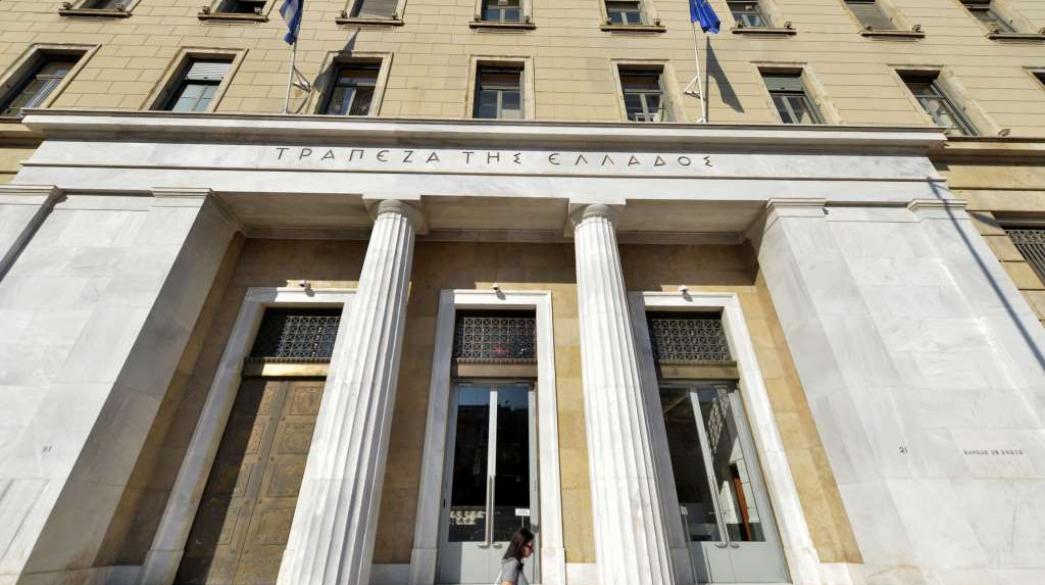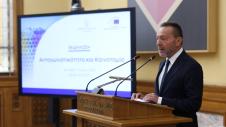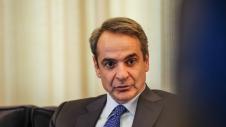A tradition that has lasted almost a century will be broken in 2024, as the Bank of Greece will not distribute dividends to the state and its private shareholders, because of the strict monetary policy in the eurozone, which obliges it to pay very high interest rates to commercial banks and the state for their assets.
Throughout its history, from its foundation in 1928 to the 'black' period of 1942-48, when a dividend of 30 drachmas was approved, the Bank of Greece has distributed dividends. During the great economic crisis of the previous decade, when Greek commercial banks stopped distributing dividends, the Hellenic Central Bank continued to distribute high dividends, which offered private shareholders dividend yields of even more than 5%.
In the last four years, the dividend to private shareholders had stabilised at 0,6720 (net payable: 0,6384). In 2022, the CBE's net profit had reached EUR 456,7 million. Under the legislation, the lion's share of the distribution made this year had been received by the Greek State - EUR 400,7 million. EUR 13,3 million had been distributed to private shareholders, while EUR 42,7 million had been kept by the BoE in its extraordinary reserve.
From the preliminary draft budget it became known that in 2024 the CBE will not distribute dividends to the State and private shareholders. The preliminary draft records the strong support offered to the state in 2023 by the CBE's dividend, but also the provision for no dividend distribution in 2024:
- In the section "Other taxes on production", which includes the CBE dividends, it is stated for 2023 that: 'The main revenues of this category come from the business tax and the State's participation in the profits of the BoE. Other taxes on production are estimated at EUR 1 153 million, up EUR 86 million compared to the target, mainly due to the increased dividend from the BoE of EUR 43 million' (NB: the dividend received by the State, as mentioned above, exceeded EUR 400 million).
- For 2024, however, the draft notes that: "From other taxes on production, revenues of EUR 718 million are projected, down by EUR 435 million compared to the 2023 estimate, mainly due to the inclusion of a provision on the non-dividend payment by the BoE". It is worth noting, however, that the government, while losing from the dividend distribution, will receive from the BoE unusually increased interest on its deposits (in September they amounted to €8.4 billion), as interest is calculated at the deposit acceptance rate, which has reached a record high of 4%.
This announcement gave rise to a liquidation of the BoG's share in yesterday's session on the Athens Exchange, where it closed with a loss of -4.39% and with an unusually high volume and trading turnover, which exceeded 840,000 euros - the CBE's share has historically been characterized by very limited tradability.
How we came to the non-dividend distribution
The central banks of the Eurosystem, through which monetary policy is actually conducted, like the ECB itself, have entered a period in which they are paying the cost of their policies, first to support the economies in the great crisis and pandemic and, from the summer of 2022, to bring inflation, which has escaped to record levels for the euro era, back under control.
To support the economies, interest rates even fell to negative levels, while central banks bought large amounts of bonds (quantitative easing - QE) and offered very cheap and abundant funding to banks. When the ECB was forced to change its policy, now raising its key interest rates to a record level (the deposit rate, which had reached negative levels, is now at 4%), the Eurosystem started, especially this year, to be burdened with increased costs from two sides:
- It is paying very high interest to commercial banks on their deposits, at a time when loose monetary policy has increased banks' liquid assets to unprecedented heights.
- At the same time, central banks, while paying high interest rates, have very low-yielding bonds in their portfolios. They are also suffering losses from the sales of bonds they had bought during quantitative easing, as high interest rates reduce the present value of the securities.
- In this context, the Bank of Greece has been luckier than other central banks, as its losses come mainly from one side: it is paying more for government and bank deposits (they amounted to €52.9 billion in total in September).
As for bonds, the BoG was lucky, when Greece was admitted to a quantitative easing program, the PEPP pandemic program (Greece did not participate in the first QE due to its low credit rating), to buy Greek government bonds that had the highest yields in the eurozone.
This was one of the main factors that allowed the BoG to show high profits even in 2022, when most Eurosystem banks, like the ECB, showed low or negative results. However, already in FY 2022, although the bottom line profits were high, the BoE had started to suffer the effects of the interest rate hike.
As it had announced, "net interest - income amounted to EUR 2.3 million, compared to EUR 435.9 million in the previous financial year, a decrease of 99.5%".
Explaining this development, the BoG noted that 'the decrease in net interest - income is mainly due to the mismatch between fixed interest - income on assets (i.e. mainly bonds) and variable interest - income on short-term liabilities (i.e. mainly bank and government deposits), as a consequence of the rapid increase in the ECB's key interest rates in the current financial year'.
It is noteworthy that in 2022, although the full effect of the interest rate increase was not yet in place, the BoG had paid EUR 55.6 million in interest to the State, down from EUR 20.6 million in FY 2021. In other words, interest payments to the State had already more than doubled. Similarly, interest payments to banks had been made in 2022 amounting to EUR 185.2 million.
These charges were offset by increased income from the bond portfolio purchased under PEPP (an increase of EUR 195.8 million), an increase of EUR 113.6 million in interest on net claims arising from the intra-Eurosystem allocation of banknotes in circulation and a decrease of EUR 217.1 million in interest paid to banks under the TLTRO III funding programme.
In FY 2023 and possibly 2024, in the absence of a significant reduction in ECB interest rates that would change the balance, the burden on the Bank of Greece of the increase in interest payments to banks and the State will prevent it from making cash distributions to the State and private shareholders.
The BoG in a better position than the Bundesbank
Paradoxical as it may seem, in this difficult period for central banks, the Bank of Greece is in a better position than Germany's mighty Bundesbank. The International Monetary Fund predicts that the German central bank, which is "loaded" with huge amounts of very low-yielding German bonds, will "write off" the biggest losses in the Eurosystem.
However, the IMF does not predict that these losses will exceed the limits of central bank strength, which would lead to a need for recapitalisation by the state, which would also create serious political problems. In any case, for central banks, their balance sheet is not particularly important (many internationally have even operated with negative equity), as what matters is that the objectives of monetary policy are served.
According to the IMF, in 2022 as a whole Eurosystem banks marginally avoided losses (several did not, however). Based on the Fund's projections, the Eurosystem will incur large losses in 2023-24, before returning to profit in 2025 and fully recovering losses by 2027. The cumulative losses would be around €55 billion over the two years, or 0.5% of euro area GDP.
These losses are estimated to exceed 50% of the provisions made by Eurosystem banks, while for the two largest central banks, the Bundesbank and the Bank of France, it is estimated that provisions will not be enough to absorb the losses and capital and reserves will be eroded.
Two factors will help central banks to return to profits more quickly: the phasing out of TLTRO funding, which banks are "parking" at central banks at the high deposit-taking rate of 4%, and the reinvestment of PEPP bond proceeds as new securities purchased have a higher yield.
Among the five largest national central banks, the Fund stresses,
- The Bundesbank is likely to incur the largest and most persistent losses. Its cumulative losses are projected to peak at nearly 1.2% of German GDP in 2025, exceeding the sum of general provisions and own funds and reserves projected at the end of 2021.
- Bank of France losses are projected to peak at 0.7% of GDP by 2024, fully consuming the projections and leaving positive capital and reserves, but below the statutory national target.
- Cumulative losses at the central banks of Spain and the Netherlands peak at 0.2% and 0.3% of GDP, respectively, in 2024, with general provisions falling but capital and reserves remaining intact.
- The Bank of Italy is avoiding losses thanks to high Italian bond yields, the Fund estimates.









